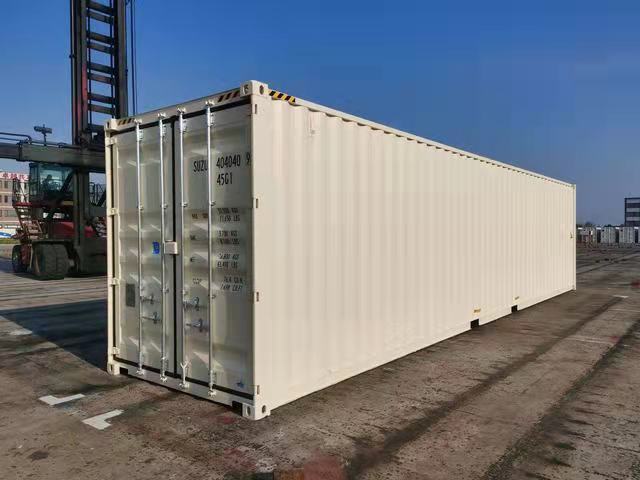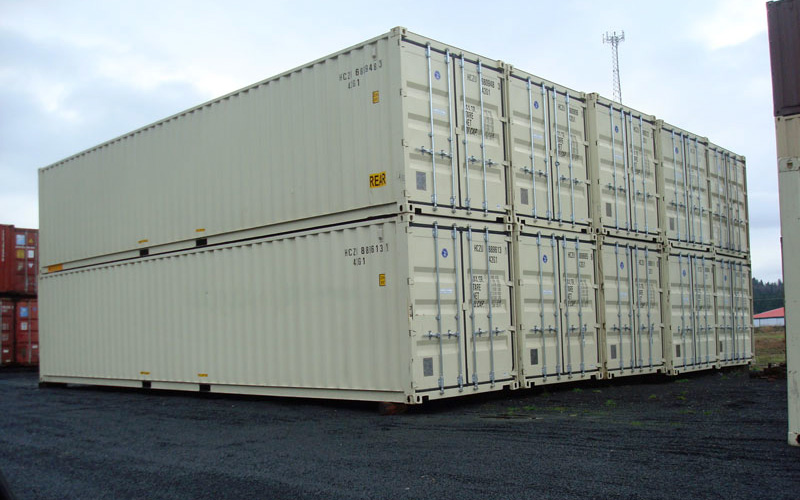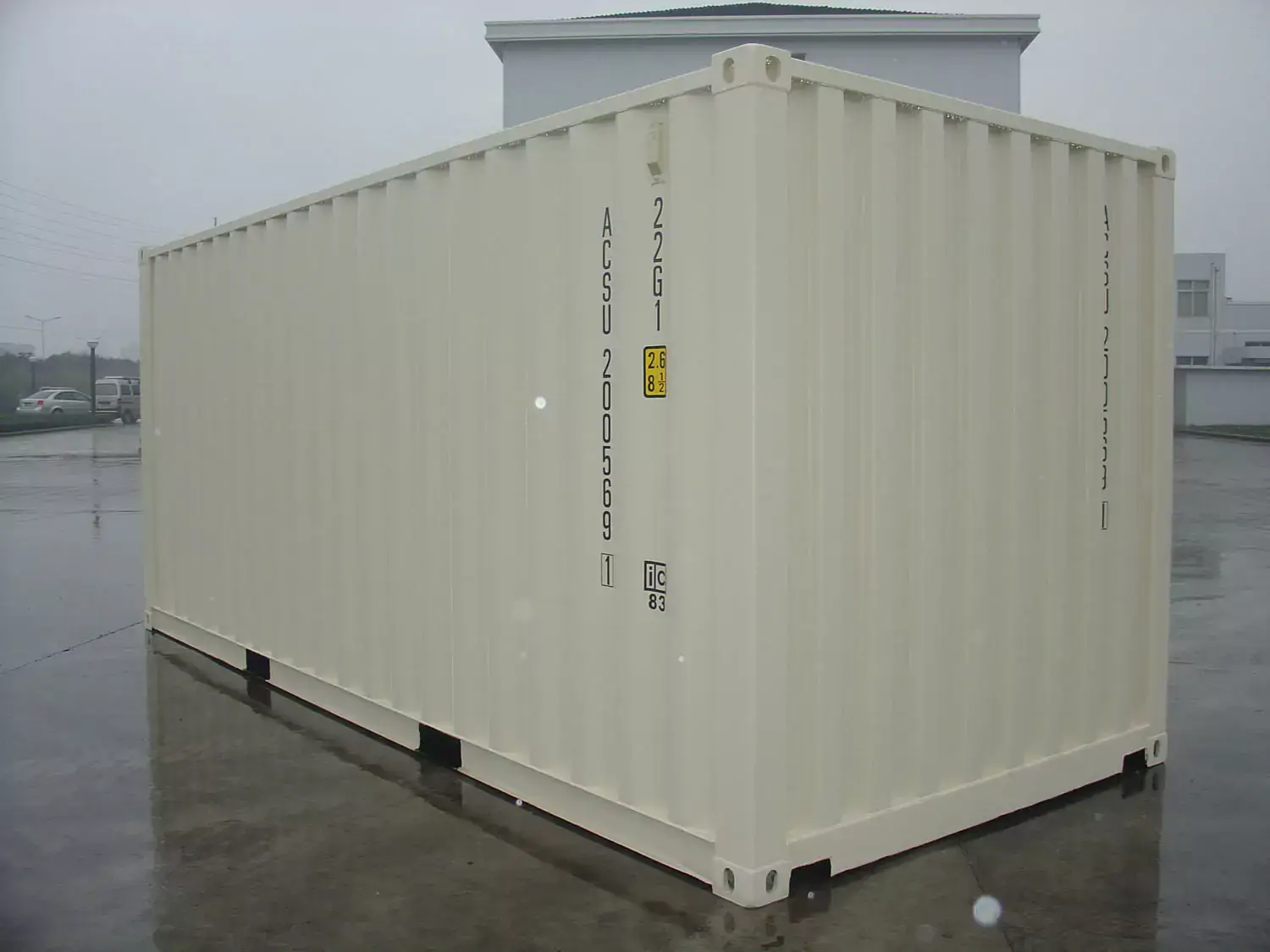Everything You Need to Know About the New Shipping Container 40 x 8 x 9.6 for Emergency Housing
Everything You Need to Know About the New Shipping Container 40 x 8 x 9.6 for Emergency Housing
Blog Article
The Ultimate Guide to Choosing the Right Delivery Container for Your Needs
When it concerns choosing the appropriate shipping container, comprehending your certain demands is important. You'll intend to consider variables like size, type, and material to ensure you make the most effective option. From typical dimensions to specialized options, there's a lot to explore. Plus, budgeting for both the container and any type of adjustments can make a huge distinction. Let's break down the crucial elements to assist you locate the best suitable for your needs.
Recognizing Delivery Container Sizes
When you're picking a delivery container, recognizing the numerous dimensions readily available is crucial for making the right choice. Delivering containers typically come in basic lengths of 20 and 40 feet, however you'll likewise locate various other measurements. Understanding the dimension you need depends upon what you intend to store or transport.If you're moving smaller items, a 20-foot container may be ideal, while larger shipments often call for a 40-foot container. The height can additionally differ; high cube containers offer added vertical room, which can be helpful for taller goods.Before determining, determine your freight, and consider exactly how much space you'll need for packing and dumping. Always consider possible future needs-- choosing a slightly bigger container may conserve you hassle down the line. Inevitably, selecting the appropriate size will certainly enhance performance and ensure your things are protected throughout transit
Kinds Of Delivery Containers Available
There are a number of kinds of shipping containers readily available, each created for certain purposes and cargo requirements. The standard completely dry container is versatile, best for basic cargo. If you're delivering disposable items, consider a cooled container, which keeps a controlled temperature level. For large products, high cube containers provide extra height, suiting taller loads.If you need to deliver hefty equipment or equipment, flat rack containers supply a sturdy base without walls. Open-top containers permit for easy loading of tall cargo, with a removable tarp covering for security. If you're seeking flexibility, consider a collapsible container that can be quickly saved when not in use.Lastly, specialized containers like container containers are used for liquids, while vented containers are designed for bulk cargo that needs ventilation. Recognizing your freight kind will assist you pick the right container to meet your delivery requires successfully.
Product Factors To Consider for Durability
When selecting a delivery container, the product plays an essential duty in its toughness. You'll desire to evaluate the benefits of steel versus aluminum, especially concerning corrosion resistance. Understanding these factors can aid you make an extra informed choice for your delivery needs.
Steel vs. Aluminum Containers
Just how do you select between steel and light weight aluminum containers for your delivery needs? Beginning by thinking about sturdiness. Steel containers are robust and deal exceptional strength, making them ideal for hefty tons and severe conditions. They withstand damage from impacts and are often cheaper, which can be a major variable for budget-conscious buyers.On the various other hand, aluminum containers are lightweight, which can conserve you on shipping costs. They're easier to maneuver and are a terrific option if you need to carry goods often. Nevertheless, light weight aluminum is typically more pricey and much less robust than steel. Weigh your certain needs meticulously, including weight, expense, and the type of cargo you'll be delivery, to make the right option for your scenario.
Corrosion Resistance Elements
Picking the right material does not simply involve weight and cost; rust resistance plays a significant role in resilience. When choosing a delivery container, consider the atmosphere it'll encounter. Steel containers, while solid, can rust if not correctly dealt with. Seek options with protective finishings or galvanization to boost their lifespan. Aluminum, on the other hand, uses all-natural deterioration resistance, making it excellent for seaside areas or humid conditions. Nevertheless, it can be a lot more pricey. Additionally, assess the container's usage-- if it'll be exposed to chemicals or severe weather condition, prioritize materials that can endure these conditions. Investing in a corrosion-resistant container now can save you from costly repair work or replacements down the line. Choose wisely for long-term advantages.
Alterations and Modification Options
Shipping containers aren't simply for moving products; they can be transformed to fulfill your particular demands through different alterations and customization choices. You can convert a conventional container into a comfy office room, a momentary retail shop, or also a personal health club. The possibilities are virtually endless.Think regarding including windows, insulation, or air flow to improve convenience. You might likewise consider electric wiring, plumbing, or also customized shelving to improve capability. If protection's a concern, enhanced locks can provide tranquility of mind.For visual appeal, you can repaint the container or include a distinct layout to make it stand apart. Do not forget regarding floor covering options-- whether you want sturdy plywood or something much more innovative, it can raise the space.Ultimately, customizing your shipping container to fit your needs can enhance use and produce an one-of-a-kind environment that shows your style.
Evaluating Your Transport Demands
When it comes to utilizing your customized delivery container, recognizing your transport needs is essential. Begin by identifying what you'll be delivery-- whether it's hefty tools, retail goods, or personal items. Each sort of cargo has different demands pertaining to dimension, weight, and accessibility.Next, consider the distance and mode of transport. Are you shipping locally, country wide, or globally? This impacts the container's layout and capability. If you're making use of vehicles, assure your container fits standard dimensions for easy loading and unloading.Additionally, consider transportation conditions. Will your items need unique defense from climate or temperature fluctuations? If so, you could need insulation or air flow attributes in your container.Lastly, analyze exactly how typically you'll be carrying products. Regular shipments might need a more durable and versatile container to meet recurring needs. By attending to these aspects, you'll be well-prepared to select the best shipping container for your demands.
Budgeting for Your Delivery Container
Setting a budget for your delivery container is crucial for guaranteeing a smooth buying process. Initially, figure out exactly how much you can afford to invest. Remember that rates can vary considerably based upon size, problem, and type. New containers generally cost a lot more, however made use of ones can use substantial savings.Next, take into consideration any type of added expenses you could incur, such as transport charges, distribution fees, and alterations. If you prepare to tailor the container, consider those expenditures as well. Study different suppliers to contrast prices and locate the best offer that meets your needs.Don' t fail to remember to consist of any licenses or regulations that might put on your purchase and usage of the container. By clearly describing your spending plan, you'll be better prepared to make enlightened decisions, guaranteeing you New Shipping Container 40' x 8' x 9’6" get the ideal container without damaging the bank.
Upkeep and Look After Durability
To guarantee your shipping container lasts for several years, routine upkeep is crucial. Start by evaluating the exterior for rust, dents, and damages. If you find any kind of concerns, address them instantly to avoid further degeneration. Tidy the container occasionally, both inside and out, to remove dirt, debris, and wetness that can bring about corrosion.Ensure the doors secure properly and lubricate the hinges to prevent rust and sticking. If you're utilizing the container for storage space, take into consideration including air flow to lower moisture and mold and mildew development. For added defense, use a rust-inhibiting paint or sealer annually.If your container's situated in a rough setting, like seaside locations, you could require to raise upkeep regularity. Watch on the floor covering, also; any kind of indicators of wear should be fixed today. With these basic steps, you'll prolong the life of your shipping container significantly.
Often Asked Questions
How Do I Find a Trusted Shipping Container Provider?
To discover a dependable shipping container supplier, beginning by looking into on-line evaluations, requesting recommendations from friends or sector calls, and comparing prices. Constantly inspect their credentials and guarantee they supply top quality containers that satisfy your needs.

Can I Rent a Delivery Container Rather Than Buying?
Yes, you can definitely rent out a shipping container as opposed to getting one. Numerous suppliers supply rental choices, which can conserve you money and give versatility if you only require it for a short duration.
What Permits Are Required for Container Placement?

Are Shipping Containers Weatherproof and Ideal for Outdoor Storage Space?
Yes, delivering containers are typically weatherproof, developed to hold up against harsh problems. Their durable building keeps your things safe and secure and dry, making them ideal for exterior storage. Simply assure correct air flow to protect against wetness buildup inside.
Just how Do I Move a Delivery Container Once Purchased?

Report this page